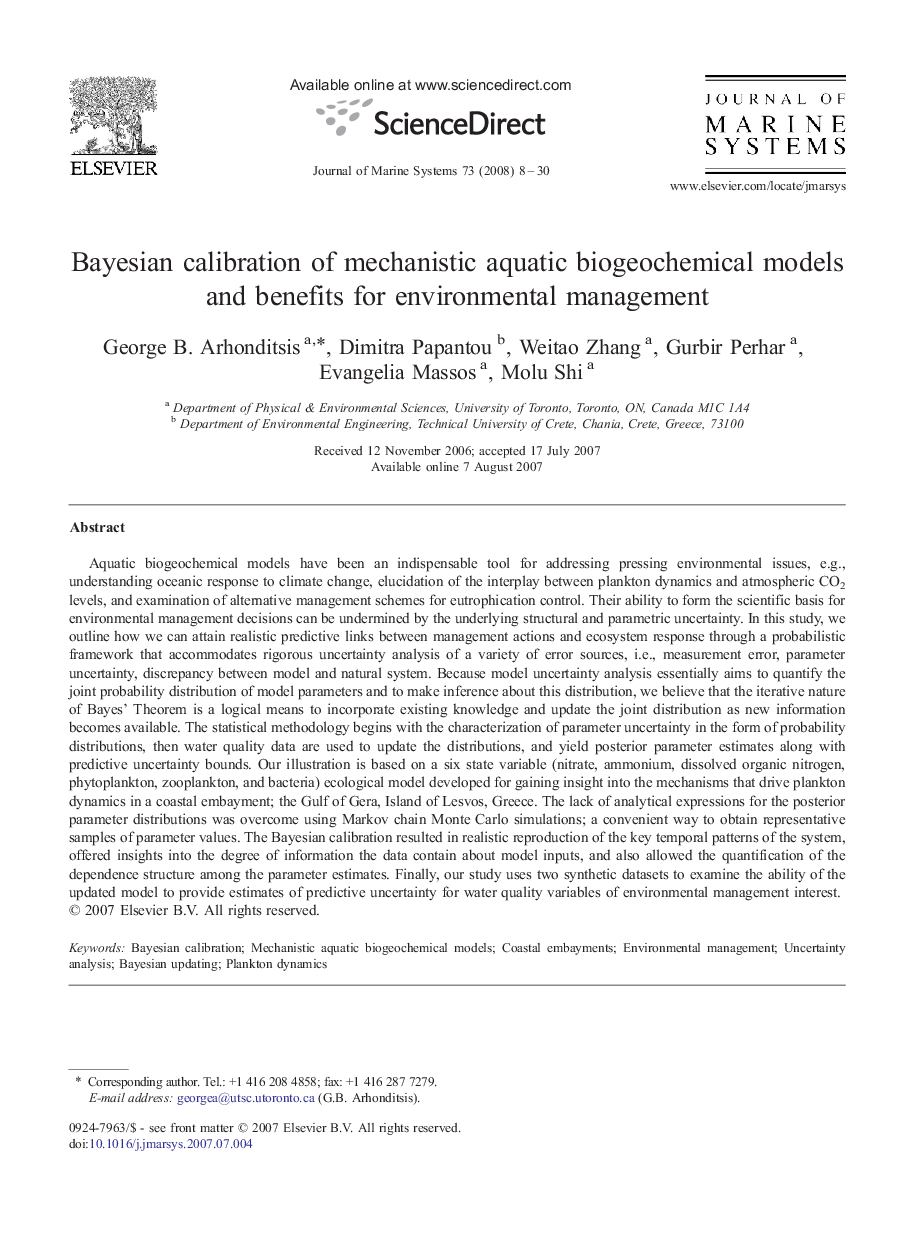| Article ID | Journal | Published Year | Pages | File Type |
|---|---|---|---|---|
| 4548741 | Journal of Marine Systems | 2008 | 23 Pages |
Aquatic biogeochemical models have been an indispensable tool for addressing pressing environmental issues, e.g., understanding oceanic response to climate change, elucidation of the interplay between plankton dynamics and atmospheric CO2 levels, and examination of alternative management schemes for eutrophication control. Their ability to form the scientific basis for environmental management decisions can be undermined by the underlying structural and parametric uncertainty. In this study, we outline how we can attain realistic predictive links between management actions and ecosystem response through a probabilistic framework that accommodates rigorous uncertainty analysis of a variety of error sources, i.e., measurement error, parameter uncertainty, discrepancy between model and natural system. Because model uncertainty analysis essentially aims to quantify the joint probability distribution of model parameters and to make inference about this distribution, we believe that the iterative nature of Bayes' Theorem is a logical means to incorporate existing knowledge and update the joint distribution as new information becomes available. The statistical methodology begins with the characterization of parameter uncertainty in the form of probability distributions, then water quality data are used to update the distributions, and yield posterior parameter estimates along with predictive uncertainty bounds. Our illustration is based on a six state variable (nitrate, ammonium, dissolved organic nitrogen, phytoplankton, zooplankton, and bacteria) ecological model developed for gaining insight into the mechanisms that drive plankton dynamics in a coastal embayment; the Gulf of Gera, Island of Lesvos, Greece. The lack of analytical expressions for the posterior parameter distributions was overcome using Markov chain Monte Carlo simulations; a convenient way to obtain representative samples of parameter values. The Bayesian calibration resulted in realistic reproduction of the key temporal patterns of the system, offered insights into the degree of information the data contain about model inputs, and also allowed the quantification of the dependence structure among the parameter estimates. Finally, our study uses two synthetic datasets to examine the ability of the updated model to provide estimates of predictive uncertainty for water quality variables of environmental management interest.
